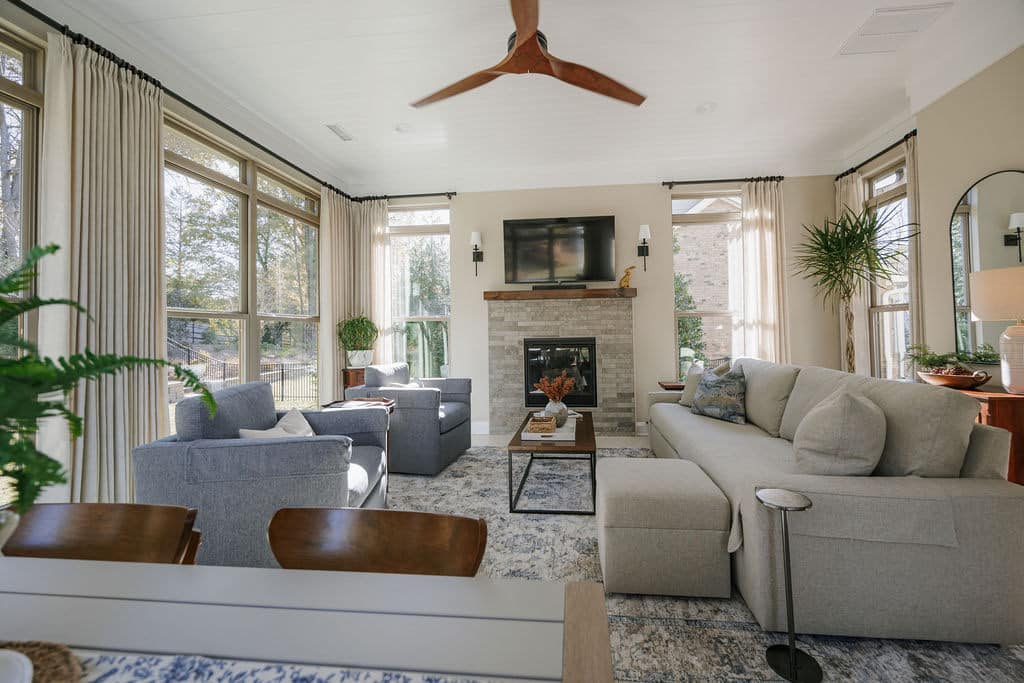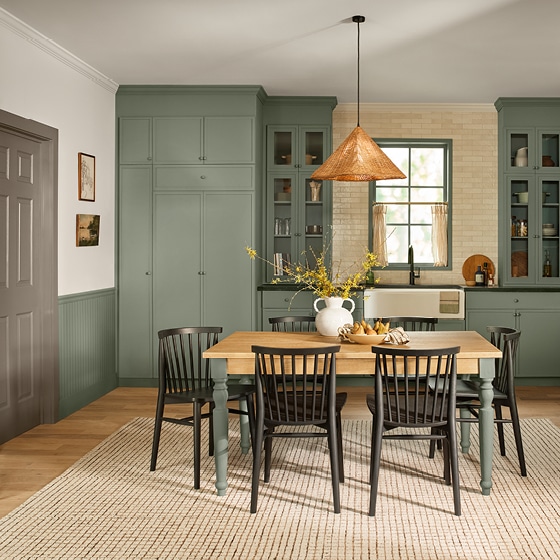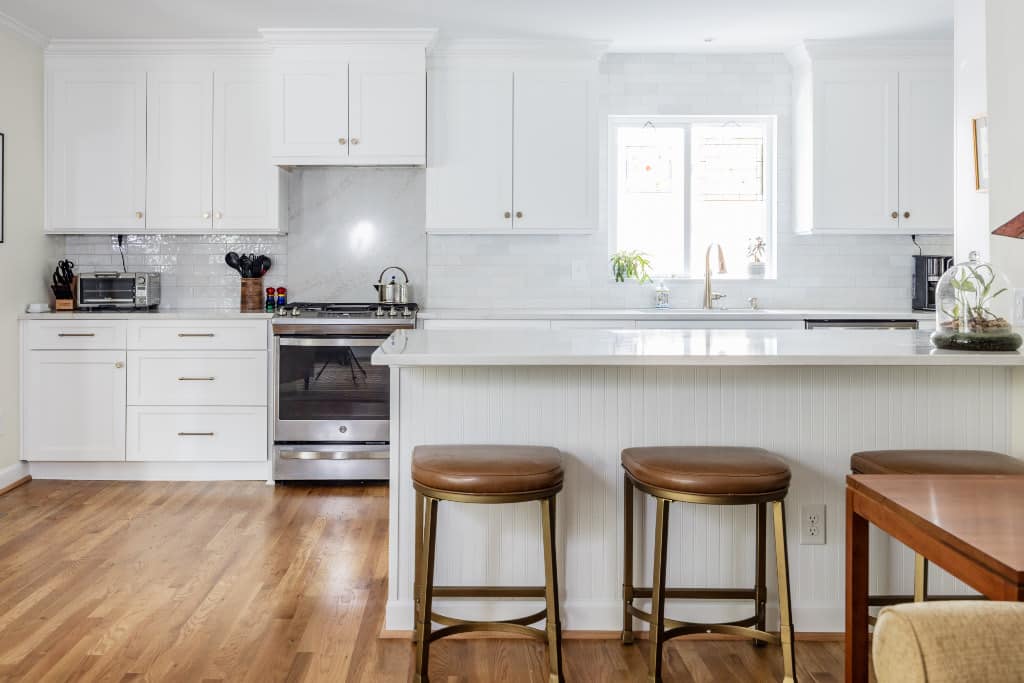
Remodeling an older home in Charlotte: 6 key steps
If your home in Charlotte or the surrounding area was built before 1969, you’re not alone. In fact, much of our region’s housing stock falls into this “aging gracefully” category. While these homes have stood the test of time and often have unique character, solid bones and are located in beloved neighborhoods, they also come with quirks, wear-and-tear, and layouts that don’t always meet the demands of modern living.
So if you’re living in a home that needs remodeling—whether it’s the kitchen, bath, whole house, or all of the above—what’s the best process to follow?
We’ve helped hundreds of Charlotte-area homeowners transform their older homes into comfortable, functional, beautiful spaces they love. Here’s what we recommend when navigating a remodel in a home that’s seen a few decades.
1) Start your Charlotte home remodel with a professional evaluation
Remodeling an older home isn’t just about aesthetics—it’s about structural integrity, safety, and smart investment. Before you dream too far ahead, it’s crucial to have your home evaluated by a licensed residential General contractor who is experienced in updating with older construction.
You may be dealing with outdated wiring, aging plumbing, inefficient windows, asbestos in flooring, lack of insulation, or structural settling that have occurred over the years. These hidden issues need to be identified up front, not midway through a project, as they can impact your budget.
At Palmer Custom Builders, we take a holistic view of the home during our initial consultation. We don’t just look at the room you want to remodel—we consider how that room interacts with the rest of the home and what surprises might be lurking behind the walls under the flooring or in the ceiling above.
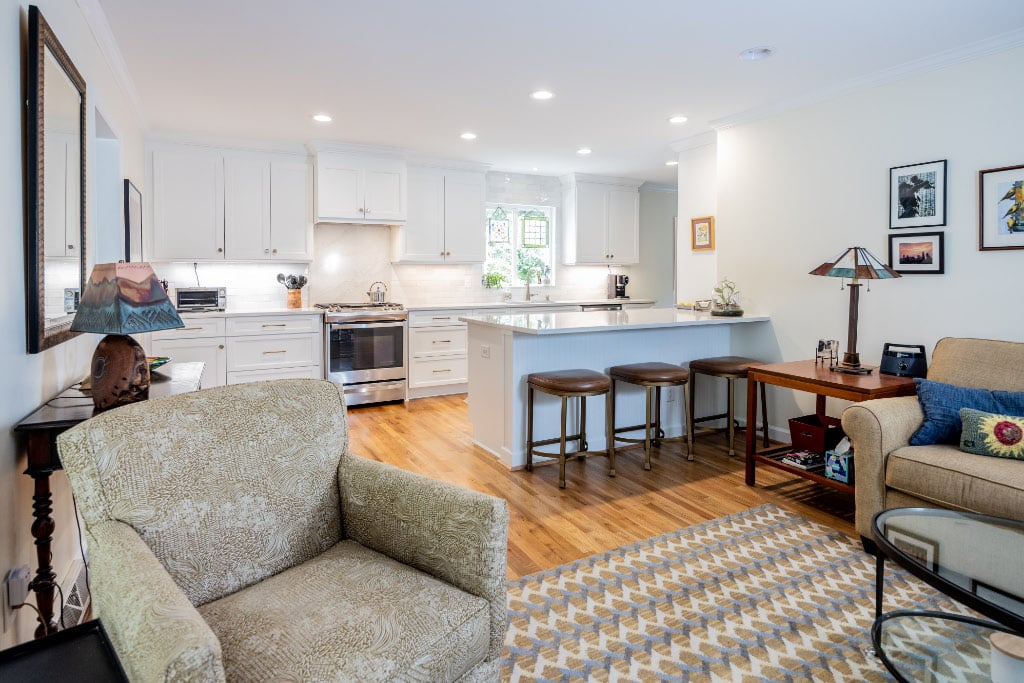
2) Set realistic remodeling goals for older Charlotte homes
Older homes often require more prep work before the “pretty stuff” begins. That’s why it’s so important to set realistic goals for what you want to achieve—and build in contingencies in terms of money and time for the unexpected.
Want an open-concept kitchen? In a home built in the 1950s, that may involve removing load-bearing walls, rerouting HVAC, and relocating plumbing and refinishing hardwood flooring. Want a spa-like bathroom? Sounds wonderful—but don’t be surprised if the subfloor needs reinforcing or decades of pre-existing water damage needs addressing.
Our best advice? Be open, honest, and detailed about what you want from your space. And then work with a design-build partner who will help you understand where you can splurge, where you can save, and how to get the most value for your investment.
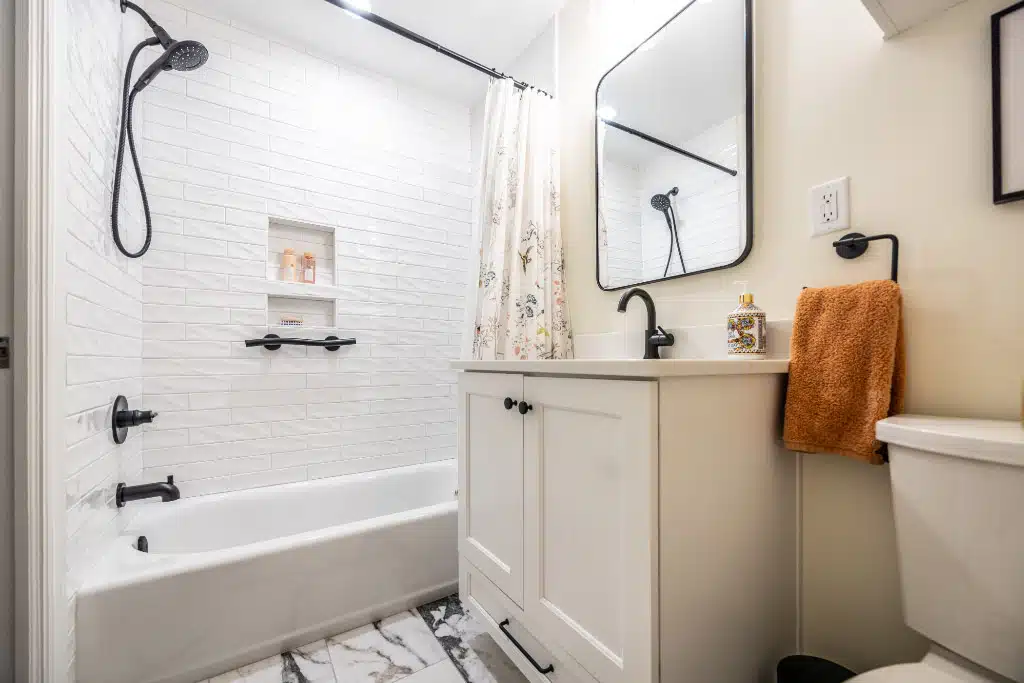
3) Work with a Design-Build Remodeling Contractor (like us!) that knows older homes
Aging homes are not one-size-fits-all. Your remodel should honor your home’s history while integrating today’s standards—and that takes a skilled team.
Design-build firms like Palmer Custom Builders manage your project from concept to completion. That means the same team is responsible for your design vision, permitting, budgeting, scheduling, construction and final walk-through.
That’s especially critical in older homes, where unforeseen conditions might require on-the-fly adjustments. Instead of bouncing between designer, architect, and contractor (and trying to keep everyone aligned), you have one experienced partner steering the ship. Here at Palmer Custom Builders, the General Contractor will be at the helm to oversee and orchestrate the entire project.
And because we’ve worked extensively on homes built from the 1940s through the 1970s and beyond, we know how to navigate things like:
- Matching existing trim profiles and odd sized hardwoods
- Blending new floorplans into old footprints
- Working around (or safely removing) outdated materials
- Meeting today’s energy-efficiency standards without sacrificing charm
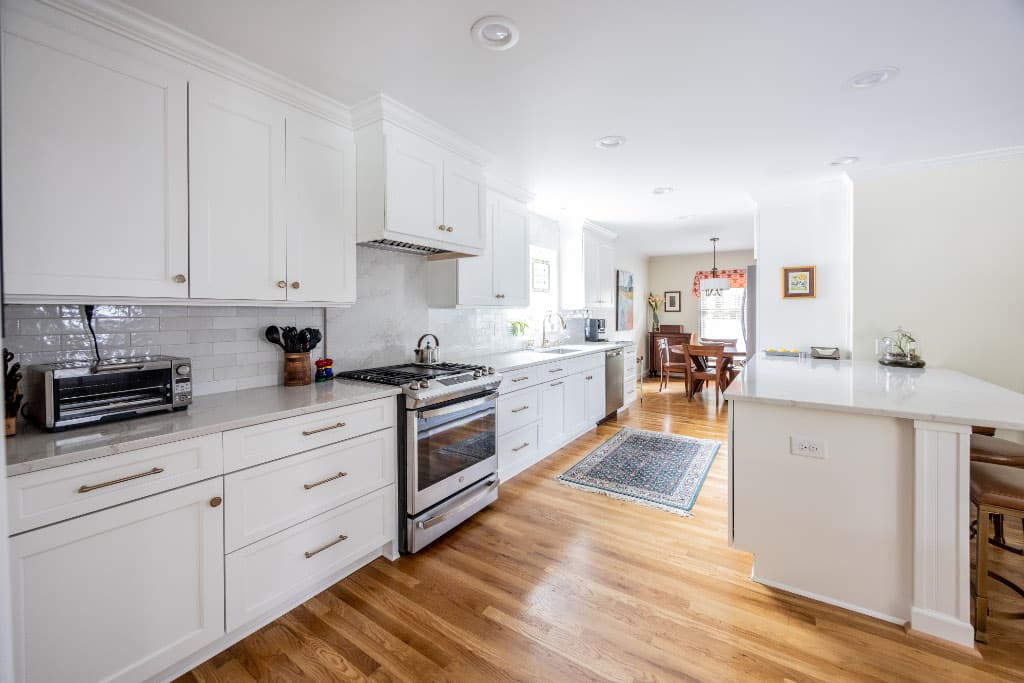
4) Understanding permits and building codes for homes built before 1969
Homes built before 1969 often don’t meet current code requirements—because they weren’t in place back then! That doesn’t mean your home is unsafe, but it does mean that any remodeling you do now has to bring impacted areas up to today’s current Building Code requirements.
That includes things like:
- Electrical outlets, grounding issues, and GFCI requirements in kitchens, bathrooms and bedrooms
- Structural integrity for second-story additions or open concepts
- Energy codes for insulation, windows, and HVAC systems
- Accessibility standards for windows and doors, depending on the scope and use of each room
As a licensed general contractor, we handle all permitting and code compliance for our clients. It’s one of the reasons we recommend working with professionals—not just to protect your investment, but to protect you and your family.
5) Don’t just fix—Future-proof your remodel for lasting value
When remodeling an aging home, it’s tempting to fix the immediate issues and call it a day. But that can cost you more in the long run.
Instead, think long-term. If you’re already opening up walls, can you add new electrical circuits or future smart home wiring? If you’re remodeling a bathroom, is this the time to make it aging-in-place ready with a zero-entry shower, blocking in walls for future grab bars? If you’re reworking the floorplan, is there a way to improve traffic flow for the next decade of life?
Future-proofing your remodel isn’t about spending more—it’s about spending wisely. A good design-build partner will help you weigh today’s needs against tomorrow’s possibilities.
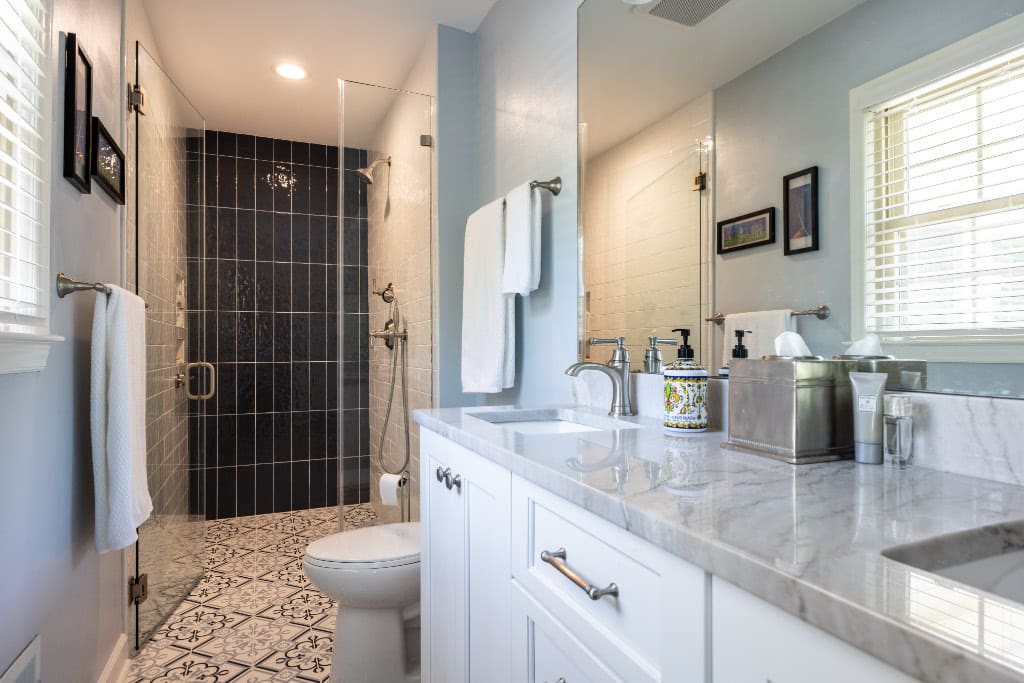
6) Preserve your home’s character while updating for modern living
One of the best things about older homes in Charlotte is their personality. Arched doorways. Real hardwood floors. Solid construction. But just because something is original doesn’t mean you have to keep it as-is.
A great remodel balances preservation with personalization. Maybe you keep the brick exterior but update the windows for energy-efficiency. Maybe you honor the original crown molding but refresh the floors and lighting. Maybe you replicate vintage details in new materials that better suit your lifestyle.
Your home should feel like yours, not a time capsule. With the right approach, you can respect the past while building a future that feels exactly right.
Ready to remodel an older home?
If you’re living in a home built before 1969 and wondering where to begin, start with a team who knows how to bring older homes into the modern era—without losing their soul.
At Palmer Custom Builders, we specialize in transforming aging homes into dream homes. Whether you’re ready to renovate or just want expert guidance on what’s possible, we’d love to talk.
By: Gary Palmer, NC & SC Residential General Contractor with 40+ years of Remodeling and New Construction Experience.
Let’s reimagine what home can be.
Need help envisioning how a home remodel, home addition, sunroom, kitchen remodel or bathroom remodel could improve your family’s home? Reach out to us at https://palmercustombuilders.com/contact/ to take the first step.
Or, interested in more information on how to avoid other costly mistakes? We suggest you check out our book. Remodeling and New Construction With No Regrets can help you ask the right questions to ensure your project fulfills your expectations.
